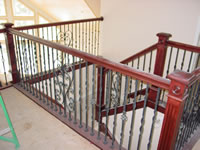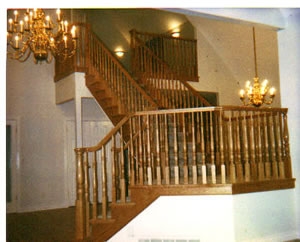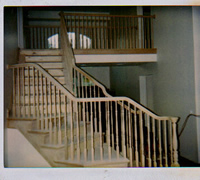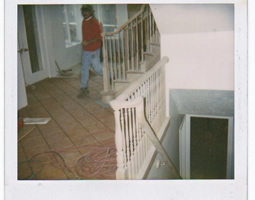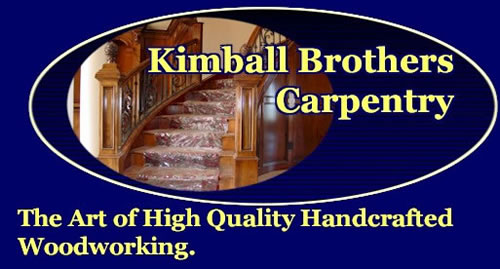
Kimball Brothers Carpentry, LLC
General Contractors, Licensed and Insured
Fountain Green, Utah
435-340-0763
| |
| Home Page |
| Finish Carpentry |
| Hand Rails |
| Log Work |
| Lathe Work |
| Historic Restorations |
| Custom Arches over Doorways and Windows |
| Garages, sheds, gazebos etc. |
| Picture Gallery |
| Contact Us |
Railings |
|
Railings and balustrades are an extremely important expression of your home. Not only must they be built to strict standards of safety, they must also be attractive and elegant. First impressions are very important. One of the first things you see in the entry way of many homes are railings. Some of the most beautiful homes in the world also have very well built and attractive handrails and balustrades. Building a good handrail is just as much an art as a science. Even a simple and economical railing, if built correctly; will greatly enhance the beauty of your home. They can come in many shapes and sizes, and made of many different woods and materials. They can be extremely ornate. Or they can be economical yet functional, with sharp clean lines.
This first railing, which is our best one to date; was built around a circular staircase. This was a new house. Although we didn't frame the house, we insisted on framing the stairway to insure the tight tolerances and exacting standards necessary to complete such a railing. The newel posts are handcrafted. There are in fact seven different handrails in this railing system. Only two of them are straight. A total of nine handrails and shoes out of a total of thirteen had to be bent into various curves. The painters used a seven coat process of stains, glazing and clear coats to make our work look really good.
Railings come in many designs. The balusters are often made of metal or wood. The wood can be turned, or even cut into square patterns. The picture to the left below shows box newel posts with metal balusters. The middle picture shows box newels with square wood balusters that have been cut into a belly pattern. The picture on the right shows metal balusters with turned newel posts. All of the box newel posts in the pictures below are hand crafted.
In many railing systems, the newel posts often stick out above the handrails, which breaks up the continuous runs of the handrail. Another popular variation is to install the newel posts below the railing using railing caps over the newel posts, as in the examples below. Unlike the pictures above, this handrail runs continuously from the lower end to the top. Notice also that the balusters can also be mounted on a continuous shoe at the base, rather than mounting them directly to the stair treads; as shown in the above left picture.
This attractive balustrade below shows a maple wood railing that was stained to a medium cherry color. The newel posts are handcrafted, and and are complimented by patterned iron balusters.
The picture below shows a newly constructed historic reproduction porch. The balusters, newel post and porch columns were all individually turned by freehand to imitate the slight differences a pioneer railing would have. The first picture below is a handcrafted railing made from honey locust. The balusters are unique in that they are handcrafted to be square with a double tapered chamfer. The second picture shows an ornate railing that boldly pronounces itself into the room, the unique feature of this balustrade is that it is free standing. It has a 120 degree wreath from the landing to the main level that was made from a volute that is only partially visible in this picture.
The next set of pictures below shows a stairway that had several landings and turns in the middle of the stair treads. This presented a difficult problem that was remedied in this case by two hand made turns in the railing that both drop and twist. They are very difficult to build and as a result are relatively expensive. These twists and turns though, made for a beautiful and unique balustrade.
Rustic style log railings are a great addition to many log homes. They are quite unique in their beauty and function. Most of our custom railings are made from hand peeled logs. Hand peeling the logs preserves the natural twists and protrusions from the log. We also assemble milled log railings with components purchased from Satterwhite Log Homes. They are an excellent source for logs and rough sawn lumber.
Running electrical wires in log homes is often difficult. Log newel posts are an excellent place to install light switches in your log home, as in the pictures below.
|
|
||


